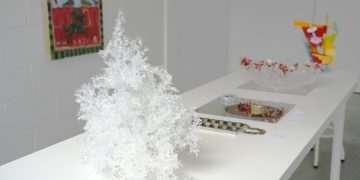IT was an ordinary day when Mount Vesuvius plastered nearby towns in thick volcanic ash 2,000 years ago.
A treasure trove of objects was buried, each giving an insight into the lives people led.


Archaeologists found the leg joint of a butchered giraffe beneath ancient Pompeii markets[/caption]
Butchered giraffe
In the drains beneath the long-gone markets of Pompeii, archaeologists have found a rich variety of foods – from sea urchin to shellfish.
But perhaps the most exotic find was the leg joint of a butchered giraffe.
It is thought to be the only giraffe bone ever recorded from an archaeological excavation in Roman Italy, according to archaeologist Steven Ellis, who directs the University of Cincinnati’s excavations at Pompeii.
The discoveries point to busy trade relationships outside of Italy.
“How part of the animal, butchered, came to be a kitchen scrap in a seemingly standard Pompeian restaurant not only speaks to long-distance trade in exotic and wild animals, but also something of the richness, variety and range of a non-elite diet,” explains Ellis.


Glass brain
In Herculaneum, a town to the west of Mount Vesuvius, two bizarre pieces of dark-coloured glass were found inside the skulls of two individuals.
The first piece of glass suspected to be of ‘organic origin’ was identified in Herculaneum in 2020.
A glassy, black material was found inside the skull of a man on a wooden bed, who was buried by volcanic ash.
While the second was hunk of black glass was found earlier this year.
Experts believe these are fossilised brains, caused by the extreme heat from the short-lived ash cloud that swept through the ancient town of Herculaneum in 79CE.
Herculaneum was buried under roughly five times the amount of ash that Pompeii was.
Similarly, the second victim had also been lying on their bed when the cloud descended.
For the brain to become glass, it must have been heated to above 510°C before quickly cooling.
This is an incredibly rare process is called vitrification.


Cheeky art
The Romans’ affinity for brothels, alcohol, and pornography has been well documented and discovered among the ruins of Pompeii.
Hundreds of sexually explicit works of art from Pompeii have been placed in the Secret Museum in the National Archaeological Museum in Naples.
These include graphic sex scenes – which experts believe could be advertisements for local brothels – as well as lots of phallic statuary, believed to bring wealth, fertility, and good luck.
Some of these pieces were so cheeky that they were deemed “pornographic” in 1821, and the museum closed the room to visitors in 1849.
The Secret Museum didn’t reopen for good until 2000.

The simple etchings depict men with shields and spears fighting animals and each other[/caption]

Political slogans and messages of support for candidates can still be seen preserved on the walls today[/caption]
Graffiti
Pompeiians were politically active – and they have the graffiti to show for it.
There was an upcoming election when the city was buried by Mount Vesuvius.
Political slogans and messages of support for candidates can still be seen preserved on the walls today.
Though it wasn’t just political statements being plastered around.
Last May, charcoal wall drawings were unearthed that archaeologists believe were made by children as young as five.
The drawings, which were of children’s height, suggest they had attended gruesome gladiator battles in the city.
The simple etchings depict men with shields and spears fighting animals and each other.
Gabriel Zuchtriegel, director of the Archaeological Park of Pompeii, said children of the time would have come into contact with extreme forms of speculated violence.
This includes the frequent executions of criminals and slaves.
“We came to the conclusion that in all likelihood the drawings of the gladiators and hunters were made on the basis of a direct vision and not from pictorial models,” he said in a statement at the time.
“Probably one or more of the children who played in this courtyard, among the kitchens, latrine and flowerbeds for growing vegetables, had witnessed fights in the amphitheatre.”

Surgical tools
Archaeologists have also recovered surgical instruments from Pompeii – which paint a squeamish picture of medical practices in 79 AD.
Medical tools have been found in various parts of the excavated city, but most most were found at a structure known as the House of the Surgeon.
While the Romans had not yet developed germ theory, many of the tools were made of copper alloys.
Copper has antimicrobial properties – meaning the tools may have prevented infections.
The destruction of Pompeii – what happened in 79 AD?
- Pompeii was an ancient Roman city near modern Naples, in the Campania region of Italy.
- It was destroyed, along with the Roman town of Herculaneum and many villas in the surrounding area, and buried under volcanic ash in the eruption of Mount Vesuvius in 79 AD.
- The violent explosion killed the city’s inhabitants, with the site lost for around 1,500 years until its initial rediscovery in 1599 and broader rediscovery almost 150 years after that.
- The thermal energy released from Vesuvius was said to be a hundred thousand times that of the nuclear blasts at Hiroshima-Nagasaki.
- The remains beneath the city have been preserved for more than a millenium due to the lack of air and moisture in the ground.
- During excavations, plaster was injected into the voids in the ash layers that once held human bodies, allowing scientists to recreate their exact poses at the time of their deaths.
- Mount Vesuvius is arguably the most dangerous volcano on earth.
- It had been inactive for almost a century before roaring back into life and destroying Pompeii.
- Since then, it has exploded around three dozen more times – most recently in 1944 – and stands in close proximity to three million people.
- Although its current status is dormant, Vesuvius is an “extremely active” and unpredictable volcano, according to experts.
- To this day, scientists are finding cultural, architectural and human remains on the banks of Mount Vesuvius.
- Excavations at thermal baths in Pompeii’s ruins in February revealed the skeleton of a crouching child who perished in the 79 AD eruption.




























